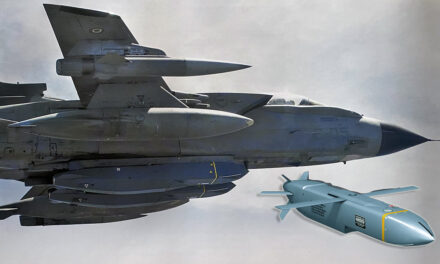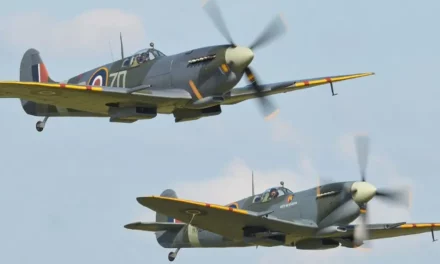SR-71 Blackbird spy plane’s J58 engine tested in full Afterburner
Taken at Beale Air Force Base (AFB) in 1986, the impressive video in this post features the test of SR-71 Blackbird J58 engine in full afterburner. This engine run was performed by MSgt John Wiltison.
Dubbed “black magic,” the J58 pushed the SR-71 (as well as the A-12 and the YF-12) from 0 to Mach 3.2.
As explained by Timothy R. Conners in his NASA Technical Memorandum Predicted Performance of a Thrust-Enhanced SR-71 Aircraft with an External Payload, the propulsion system of the SR-71 aircraft has three primary components. These components are axisymmetric mixed compression inlets, Pratt & Whitney J58 turbojet engines, and airframe-mounted, convergent-divergent blow-in door ejector nozzles.

The inlet spike translates longitudinally, depending on Mach number, and controls the throat area. The spike provides efficient and stable inlet shock structure throughout the Mach range. At the design cruise speed, most of the net propulsive force derives from flow compression pressure on the forward facing surfaces of the spike. Besides the spike, other inlet controls include the forward and aft bypass doors, used to maintain terminal shock position and to remove excess air from the inlet; and cowl and spike bleeds, used to control boundary layer growth.
The SR-71 aircraft (like its forerunners, the Lockheed A-12 and YF-12A prototype interceptor) is powered by two 34,000 lbf (151,240 N) thrust-class J58 afterburning turbojet engines.
J58 engine developed to meet a US Navy requirement
The J58 engine was developed in the late 1950s by Pratt & Whitney Aircraft Division of United Aircraft Corp. to meet a U.S. Navy requirement. It was designed to operate at speeds of Mach 3+ and at altitudes of more than 80,000 feet. The J58 was the first engine designed to operate for extended periods using its afterburner, and it was the first engine to be flight-qualified at Mach 3 for the U.S. Air Force.
In July 1976, J58 engines powered an SR-71 to a world altitude record of 85,069 feet and another SR-71 to a world speed record of 2,193 mph.

Each engine contains a nine-stage compressor driven by a two-stage turbine. The main burner uses an eight-can combustor. The afterburner is fully modulating. The primary nozzle area is variable. Above Mach 2.2, some of the airflow is bled from the fourth stage of the compressor and dumped into the augmentor inlet through six bleed-bypass tubes, circumventing the core of the engine and transitioning the propulsive cycle from a pure turbojet to a turbo-ramjet. The engine is hydromechanically controlled and burns a special low volatility jet fuel mixture known as JP7.
The DAFICS
The inlet bleed and aft bypass flow mix with engine exhaust flow just forward of the airframe-mounted ejector nozzle. Blow-in doors on the ejector nozzle remain open at low speeds and entrain additional mass flow into the exhaust stream. At high speeds, the doors close and the airframe nozzle ejector flaps reposition to form a convergent-divergent geometry. The blow-in doors and ejector flaps are positioned by aerodynamic forces.
The engine spikes and forward bypass doors are positioned by commands from the digital automatic flight and inlet control system (DAFICS). The DAFICS provides precise control of the terminal shock position. The DAFICS has significantly improved vehicle performance and range and has virtually eliminated inlet unstart, compared to the older analog control system.





